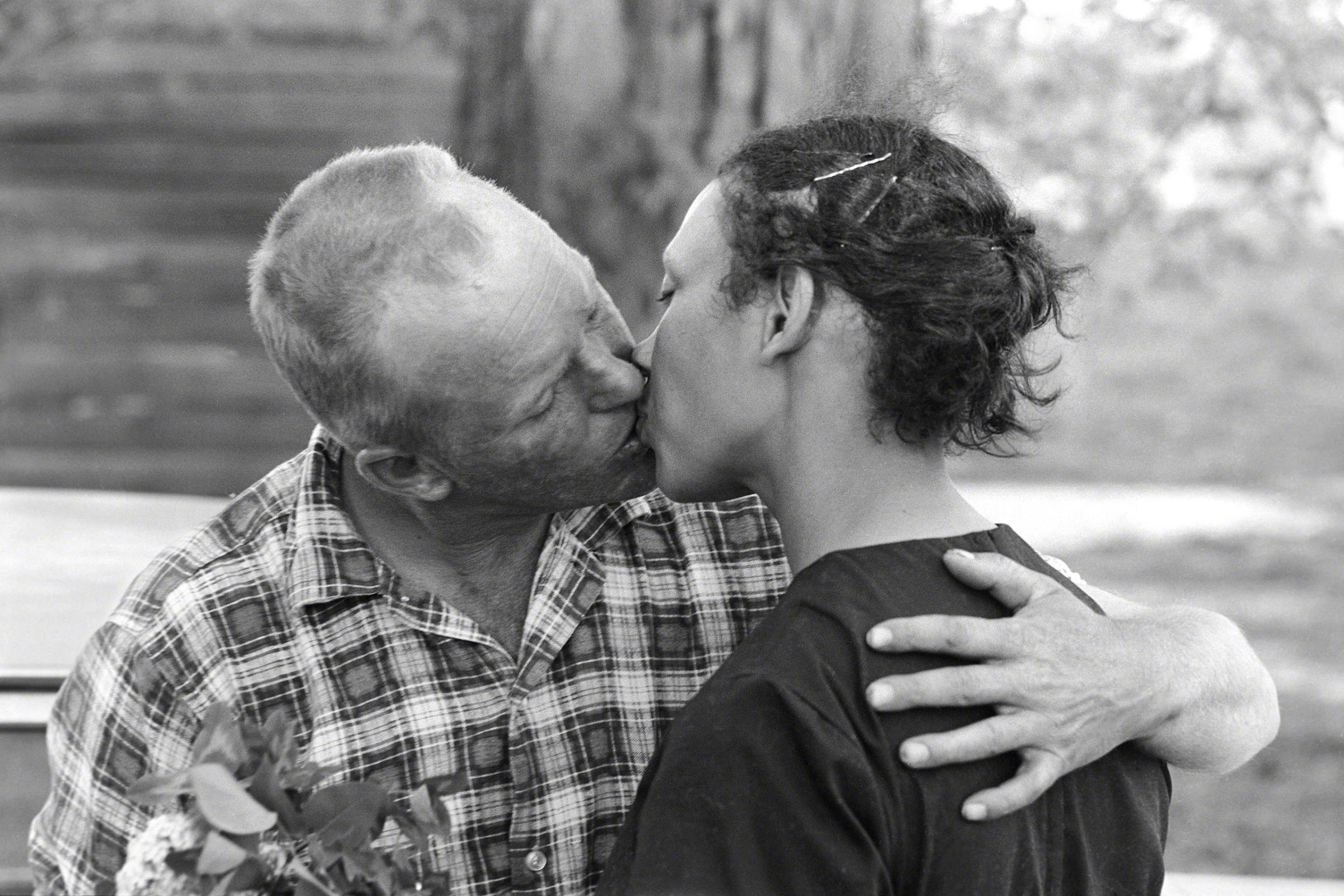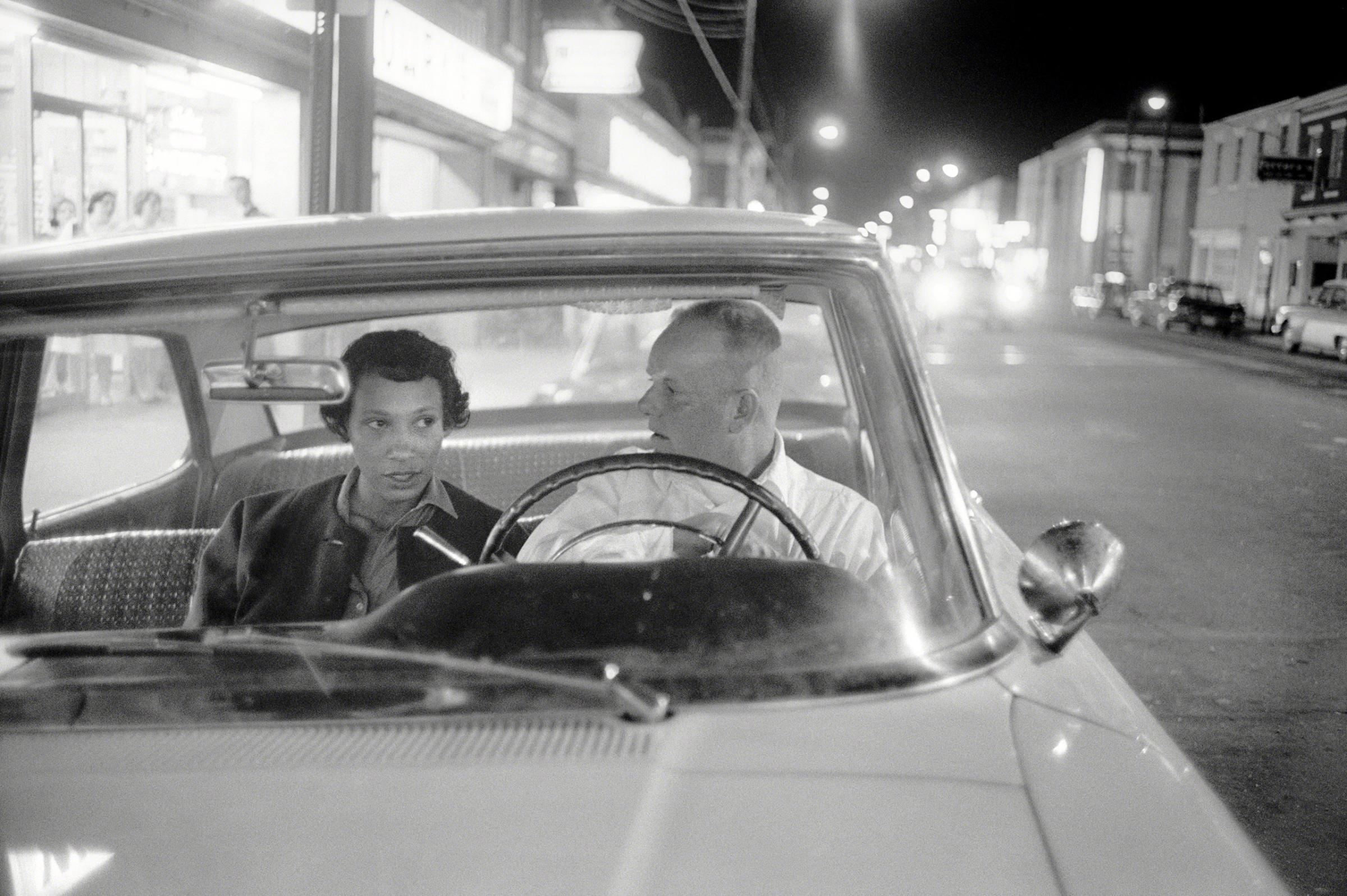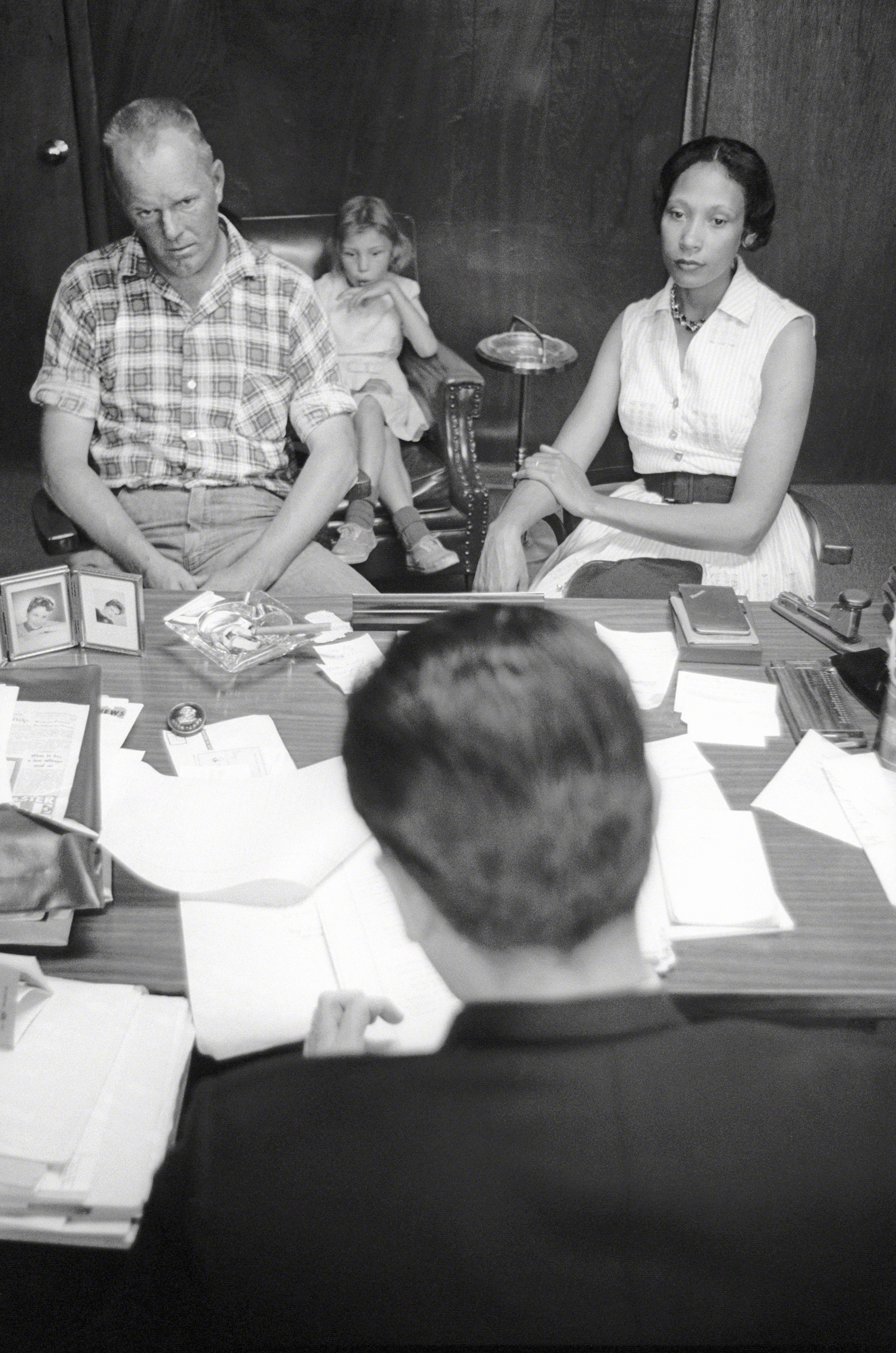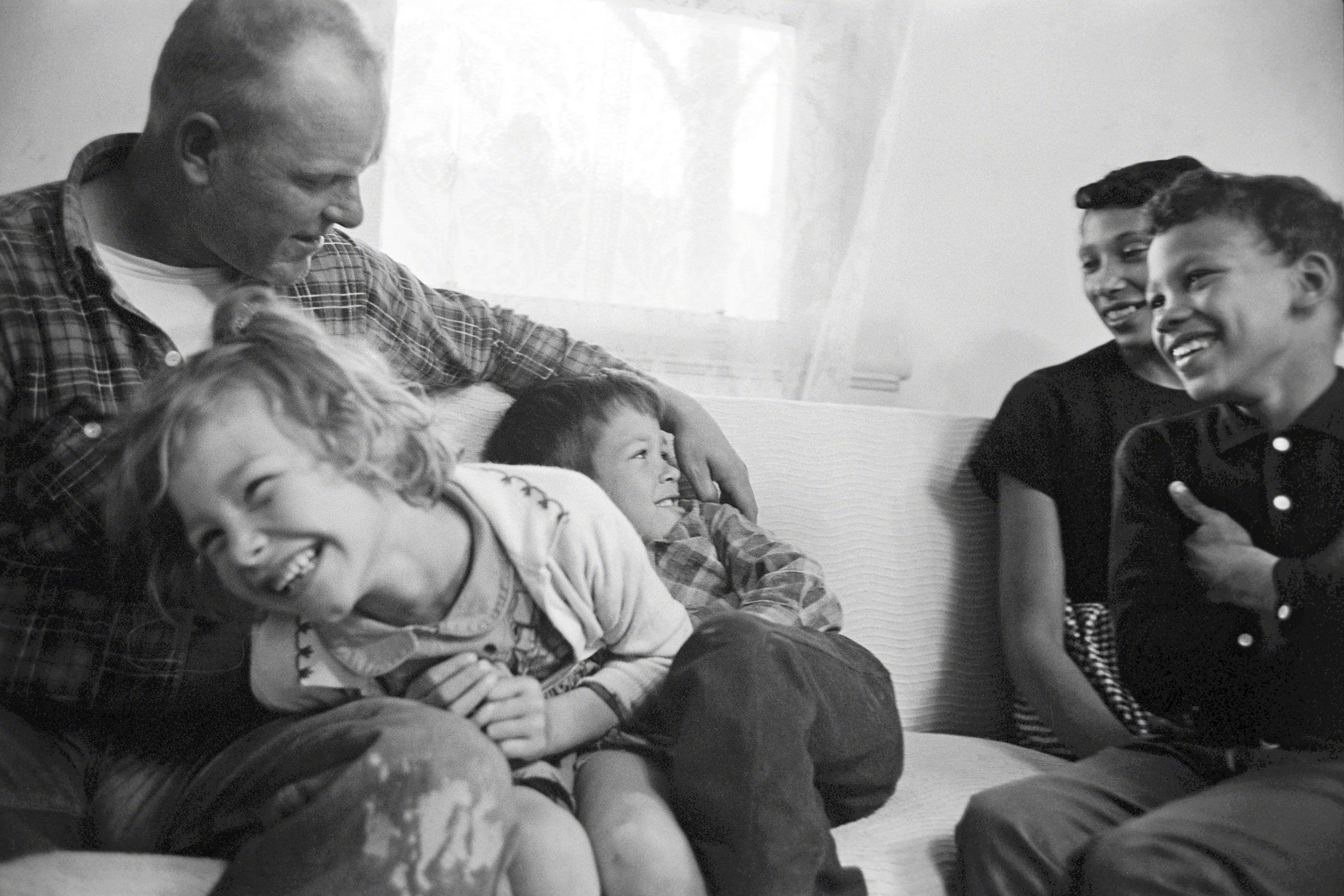
When LIFE photographer Grey Villet visited Richard and Mildred Loving in 1966, the Virginia couple had little desire for publicity. But after being essentially banished from the state for the crime of miscegenation—Richard was white and Mildred was black, at a time when Virginia and 17 other states outlawed interracial marriage—their case was on its way to the Supreme Court, so they had little choice in their fame.
Fifty years later, the couple’s story is the inspiration for the new movie Loving, and the photographs Villet took (which were published in the Mar. 18, 1966, issue of the magazine) are an important part of that story.
“It’s a really hard thing to tell a compelling story about two fairly ordinary people who just love one another and aren’t looking for the limelight,” says actor Michael Shannon, who plays Villet in the film. “To capture what unfortunately was the drama of that situation in the way that Grey did was, I think, quite an accomplishment.”
A photographer usually stays behind the scenes, and Villet (who died in 2000) did. He’s not mentioned in the original version of the story, except on LIFE’s masthead, and filmmaker Jeff Nichols (Midnight Special) says that his vision of Villet’s role in the Lovings’ life—like the scene in the exclusive clip below—was built out to support the narrative from what little information was available about their interactions.
But, seen from another angle, Villet’s role was anything but behind the scenes.
Photography played an important role in the civil rights movement of the 20th century, communicating the urgency of the situation to Americans—and people all around the world—who might have otherwise been able to plead ignorance. Publicity like the LIFE story “probably did do a lot for [the Lovings’] case,” says Nancy Buirski, a producer on Loving who also directed the 2011 documentary The Loving Story. “It also caused people to be angry.”
As Shannon points out, the photography associated with the civil-rights movement often depicts violence and hate, and Villet’s images of the Loving family show precisely the opposite. “I think they’re one of the most powerful examples of what was going on during that time,” he says, stressing their place as “pictures that had a message and an importance in the civil-rights movement and were expressing basically love and harmony.”
That sense of love and harmony—the product of Villet’s obvious ability to get his subjects to let down their guards in front of him—has meant that the images remain a rare window into the lives of a family that made history. For Nichols, that sense of intimacy allowed him to use the images as a reference not just for period details (though they did come in handy there too), but also for the characters’ personalities. That aim could not as easily be achieved with the existing 16 mm video footage of the Lovings, he says, because the couple’s awareness of the camera gets in the way. With Villet, they seemed to have decided to share their true selves.
Considering their personalities, that decision was a big one. As LIFE explained:
Richard and Mildred Loving realize that their fight will undoubtedly affect the lives of many other people if they win; there are probably a half million missed marriages in the U.S. at present. But the Lovings do not look upon themselves as champions of civil rights.
“We have thought about other people, but we are not doing it just because somebody had to do it and we wanted to be the ones,” says Richard. “We are doing it for us—because we want to live here.”










More Must-Reads from TIME
- Where Trump 2.0 Will Differ From 1.0
- How Elon Musk Became a Kingmaker
- The Power—And Limits—of Peer Support
- The 100 Must-Read Books of 2024
- Column: If Optimism Feels Ridiculous Now, Try Hope
- The Future of Climate Action Is Trade Policy
- FX’s Say Nothing Is the Must-Watch Political Thriller of 2024
- Merle Bombardieri Is Helping People Make the Baby Decision
Write to Lily Rothman at lily.rothman@time.com